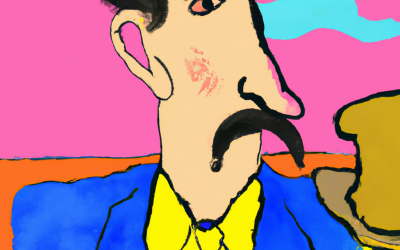Let’s face it—life is stressful. Whether it’s looming deadlines, the neighbor’s dog that barks at absolutely nothing, or the existential dread that creeps in at 2 AM, stress and anxiety are frequent visitors in our daily lives. Thankfully, meditation offers a time-tested solution. The challenge? Actually sitting down to meditate without thinking about your grocery list, that embarrassing thing you said in 2011, or whether or not birds have feelings.

But fear not! In this article, we’ll explore meditation techniques for reducing stress and anxiety, how they work, why sticking to them is tricky, and most importantly, how to fall in love with your meditation practice so you actually stick with it.
Why Meditation Works for Stress and Anxiety Relief
Before diving into specific techniques, let’s talk about why meditation is such a game-changer. Stress and anxiety thrive in the mind’s constant chatter—worrying about the future, regretting the past, overanalyzing that text message. Meditation interrupts this cycle, offering a moment of stillness amidst the chaos.
By focusing on the present, meditation rewires the brain. Science shows that regular meditation decreases activity in the amygdala (the brain’s fear center), while strengthening the prefrontal cortex (the rational, decision-making part of the brain). Translation? Less panic, more peace.

Meditation Techniques for Reducing Stress and Anxiety

1. The “I Forgot to Breathe” Technique (aka Breath Awareness Meditation)
One of the simplest and most effective mindfulness techniques for beginners is focusing on the breath. You don’t need a fancy cushion, incense, or a mountain-top retreat—just your lungs and a little patience.
How to do it:
- Sit comfortably with your eyes closed.
- Take a deep breath in through your nose, hold for a moment, then exhale slowly.
- Focus on the sensation of your breath moving in and out.
- When your mind inevitably wanders to lunch plans or existential crises, gently return to your breath.
Why it works: Deep, intentional breathing signals to your nervous system that everything is okay. It’s like pressing the reset button on stress and anxiety.

2. The “Be Here Now” Method (Mindfulness Meditation)
Mindfulness meditation is one of the most powerful practices for a balanced mind. It teaches you to stay present, whether you’re drinking coffee, folding laundry, or stuck in traffic (although maybe keep your eyes open for that last one).
How to do it:
- Choose an activity (drinking tea, walking, even washing dishes).
- Instead of rushing through it, focus on every sensation—the warmth of the tea, the feeling of your feet on the ground, the scent of the soap.
- If thoughts arise (which they will), acknowledge them without judgment and return to the present moment.
Why it works: Anxiety lives in the past and future (which ultimately only exist as thoughts in the present moment). Mindfulness pulls you into the now, where stress loses its grip.

3. The “Nap, But Make It Meditative” Technique (Body Scan Meditation)
For those who struggle with racing thoughts, body scan meditation offers a way to check in with yourself—literally from head to toe.
How to do it:
- Lie down or sit in a quiet space.
- Close your eyes and bring awareness to your toes. How do they feel? Tense? Relaxed?
- Slowly move your focus up through each part of your body—feet, legs, torso, arms, neck, and head.
- If you find tension, imagine breathing warmth and relaxation into that area.
Why it works: This holistic practice for mental well-being helps release physical tension caused by stress while calming the mind.

Why Meditation Feels Hard (and How to Fall in Love with It)
Many people try meditation, struggle with a restless mind, and assume they’re bad at it. But here’s the secret: everyone’s mind is restless. Meditation isn’t about stopping thoughts—it’s about changing your relationship with them.
How to make meditation a habit you love:
- Make it fun: Try guided meditations, calming music, or even laughter meditation (yes, it’s a thing!).
- Pair it with something enjoyable: Meditate with a cup of tea, during a warm bath, or in a cozy blanket fort.
- Keep it short: Start with 2-5 minutes a day. It’s better to meditate for a few minutes daily than to attempt 30 minutes and give up.
- Celebrate small wins: Meditated for two days in a row? That’s awesome. Recognizing progress keeps motivation high.

Overcoming Common Meditation Struggles
“I Can’t Stop Thinking”
You’re not supposed to! Meditation is about observing thoughts, not erasing them. Instead of getting frustrated, notice your thoughts and gently return to your practice.
“I Don’t Have Time”
If you have time to scroll social media, you have time to meditate. Try swapping 5 minutes of phone time for meditation.
“I Keep Forgetting”
Set a daily reminder. Better yet, link meditation to an existing habit—like after brushing your teeth or before bed.
Deep Healing Practices Through Meditation
Meditation isn’t just about stress relief—it’s also a powerful tool for deep healing practices, whether it’s working through past trauma, shifting negative thought patterns, or connecting with your higher self.
- Loving-Kindness Meditation: Helps replace resentment with compassion.
- Journaling + Meditation: A perfect blend for emotional healing through writing.
- Visualization Meditation: Great for rewiring negative thinking patterns and replacing them with uplifting images.
- Pure Being Meditation: A more advanced meditation practice that uncovers your true essence.

Make Meditation Your Stress-Free Sanctuary
Stress and anxiety aren’t going anywhere, but with meditation, you can change how you respond to them. By embracing meditation techniques for reducing stress and anxiety, you create a buffer between yourself and life’s chaos.
And remember, meditation isn’t about doing it perfectly. It’s about showing up, one breath at a time. So, take a deep inhale, exhale the stress, and start small. Your future self—calm, centered, and maybe even laughing at life’s absurdities—will thank you.
Happy meditating!














